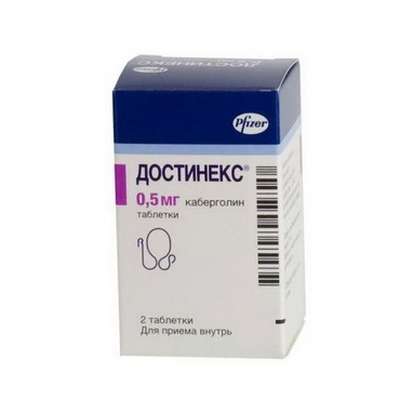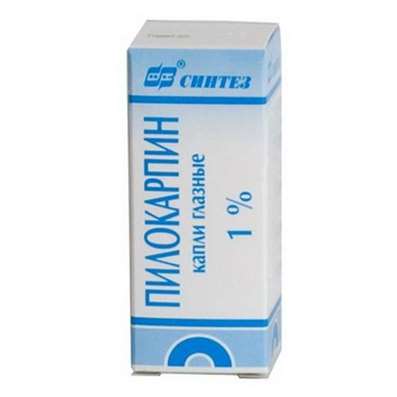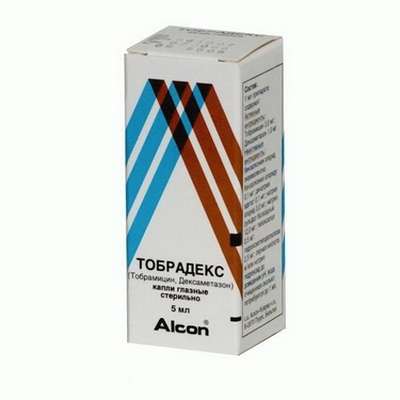Instruction for use: Agalates
I want this, give me price
Dosage form: tablets
Active substance: Cabergoline*
ATX
G02CB03 Cabergoline
Pharmacological group:
Dopamine receptor agonist [Dophaminomimetics]
The nosological classification (ICD-10)
D35.2 Benign neoplasm of pituitary gland: Pituitary adenoma; Prolactinomas; Macro-prolaktinoma; Microprolactinoma; Prolactinoma; Somatoliberinoma; Aumada del Castillo Syndrome Tumors of the pituitary and suprasellar region
D44.3 Neoplasm of uncertain or unknown pituitary nature: Macropropolactinoma; Microprolactinoma; Prolactinoma; Somatoliberinoma; Prolactinomas
E22.1 Hyperprolactinaemia: Hyperprolactinemia medication; Hyperprolactinaemia with infertility; Hyperprolactinemia in men; Hyperproduction of prolactin; Idiopathic hyperprolactinemia; Chiari-Frommel Syndrome; Forbes-Albright Syndrome; Tumor galactorrhea; Argonsa del Castillo Syndrome; Forbes-Albright Syndrome
N91.2 Amenorrhea, unspecified: Diagnosis of amenorrhea; Lack of menstrual cycle; Congenital amenorrhea
N91.5 Oligomenorrhea, unspecified: Expressed oligomenorrhoea
N97.0 Female infertility associated with lack of ovulation: Anovulation; Stimulation of ovulation; Stimulation of a single dominant follicle; Stimulation of the growth of multiple follicles; Anovulatory dysfunction of the ovaries; Anovulatory cycle; Induction of ovulation in the treatment of infertility; Infringement of an ovulation; Anovulatory infertility; Infertility due to anovulation or inadequate maturation of the follicle; The hormone-dependent pathology of the reproductive system; Anovulation chronic; Anovulatory cycles; Infertility associated with anovulation; Incomplete maturation of the follicle
O92.6 Galactorrhea: Chiari-Frommel Syndrome; Idiopathic galactorrhea
Z39.1 Care and examination of lactating mother
Composition
Tablets - 1 table.
active substance: Cabergoline 0.5 mg
Auxiliary substances: lactose - 75.8 mg; L-leucine - 3.6 mg; Magnesium stearate (E572) 0.1 mg
Description of dosage form
White flat oval tablets with a facet and a risk on one side, with engraving "0.5" on one side of the risks and "CBG" on the other.
Pharmachologic effect
Mode of action - dopaminergic.
Pharmacodynamics
Cabergoline is a synthetic ergot alkaloid, an ergoline derivative, a long-acting dopamine receptor agonist, which inhibits the secretion of prolactin. The mechanism of action of cabergoline includes stimulation of the central dopaminergic receptors of the hypothalamus. At doses higher than those required to inhibit prolactin secretion, the drug causes a central dopaminergic effect due to the stimulation of dopamine D2 receptors. The effect of the drug is dose-dependent. Reduction in prolactin in the blood is usually observed after 3 hours and persists for 2-3 weeks, and therefore, to suppress the secretion of milk, it is usually enough to take one dose of the drug. In the treatment of hyperprolactinemia, prolactin in the blood is normalized after 2-4 weeks of the drug in an effective dose. The normal level of prolactin can persist for several months after drug withdrawal.
Cabergoline has a highly selective effect and does not affect the basal secretion of other pituitary and cortisol hormones. The only pharmacodynamic effect, not associated with the therapeutic effect, is a decrease in blood pressure. The maximum hypotensive effect usually develops 6 hours after a single dose; The degree of BP reduction and the frequency of development of the hypotensive effect are dose-dependent
Pharmacokinetics
Suction. After oral administration, cabergoline is rapidly absorbed from the digestive tract. Cmax in blood plasma is achieved after 0.5-4 hours. Food does not affect the absorption or distribution of cabergoline.
Distribution. The binding of cabergoline (at a concentration of 0.1-10 ng / ml) with plasma proteins is 41-42%.
Metabolism. In the urine, cabergoline metabolites are found: 6-allyl-8β-carboxyergoline in an amount of 4-6% of the dose taken, as well as three other metabolites with a total content of less than 3%.
All metabolites to a much lesser extent (in comparison with cabergoline) inhibit the secretion of prolactin.
Excretion. Cabergoline has a long T1 / 2 - 63-68 hours in healthy volunteers and 79-115 hours in patients with hyperprolactinemia.
With such a T1 / 2, the equilibrium state is reached after 4 weeks. In urine and feces 18 and 72% of the dose, respectively, were detected. The content of unchanged cabergoline in urine is 2-3%.
Pharmacokinetics has a linear character up to a dose of 7 mg / day.
Preclinical safety data
As shown in preclinical studies, cabergoline is safe in a significant dose range and does not have a teratogenic, mutagenic or carcinogenic effect.
Indications for the Agalates
Suppression of physiological postpartum lactation (only for medical reasons);
Suppression of already established lactation (only for medical reasons);
Disorders associated with hyperprolactinemia (including functional disorders such as amenorrhea, oligomenorrhea, anovulation, galactorrhea);
Prolactin secreting adenomas of the pituitary gland (micro- and macro-prolactinomas);
Idiopathic hyperprolactinemia.
Contraindications
Postpartum or uncontrolled hypertension;
Hypersensitivity to cabergoline, other ergot alkaloids or any component of the drug;
Severe liver dysfunction;
Adverse events on the part of the lungs, such as pleurisy or fibrosis (including in anamnesis) associated with the use of dopamine agonists;
Psychoses (including in the anamnesis) or risk of their development;
Pregnancy and preeclampsia and eclampsia developed on its background;
The period of breastfeeding;
Children's age till 16 years;
Damage to the valves of the heart due to prolonged therapy with cabergoline, confirmed by echocardiography;
Simultaneous use with the antibiotics of a group of macrolides;
Lactose intolerance, lactase deficiency, glucose-galactose malabsorption syndrome.
With caution: Patients with cardiovascular diseases, arterial hypotension, Raynaud's syndrome, peptic ulcers or gastrointestinal bleeding, drowsiness, sudden onset of sleep, terminal stage of renal failure, or on hemodialysis, patients over 65; With prolonged treatment with cabergoline.
Application in pregnancy and breastfeeding
The drug is contraindicated in pregnancy and lactation.
Pregnancy should be excluded before taking the drug. It is recommended to avoid pregnancy during at least 1 month after discontinuation of treatment.
There are limited data on the intake of the drug during pregnancy, obtained during the first 8 weeks after conception. The use of cabergoline was not accompanied by an increased risk of abortion, premature birth, multiple pregnancies or congenital disorders. Other data have not been received so far.
In studies on animals, the direct or indirect adverse effects of cabergoline on the course of pregnancy, development of the embryo / fetus, delivery or postnatal development have not been found.
Given the limited experience of using cabergoline in pregnancy, when planning it, the drug should be discarded. In the case of pregnancy during treatment, cabergoline is immediately withdrawn. In connection with the possibility of expansion of a pre-existing tumor, signs of an increase in the pituitary gland in pregnant women should be monitored.
Since cabergoline suppresses lactation, the drug should not be given to mothers who prefer breast-feeding infants. During treatment with cabergoline, breastfeeding should be discontinued.
Side effects
The incidence of adverse events is classified according to WHO recommendations: very often (at least 10%); Often (not less than 1%, but less than 10%); Infrequently (not less than 0.1%, but less than 1%); Rarely (not less than 0.01%, but less than 0.1%); Very rarely (less than 0.01%), including isolated cases.
From the immune system: infrequently - the reaction of hypersensitivity, skin rash.
From the side of blood and lymphatic system: infrequently - erythromelalgia.
From the nervous system: often - hallucinations, sleep disorders, confusion, dizziness, dyskinesia, increased libido, headache, drowsiness, depression; Infrequently - hyperkinesis, psychotic disorder, delirium, paresthesia, transient hemianopia, fainting; Very rarely - a sudden attack of sleep, a pathological attraction to gambling.
From the CVS: often - postural hypotension, angina, damage to the heart valves (including with regurgitation), pericarditis, pericardial effusion, hot flashes, palpitations, peripheral edema.
From the digestive tract: very often - nausea, pain in the abdomen; Often - dyspepsia, vomiting, gastritis, constipation; Rarely - pain in the epigastric region; Very rarely - retroperitoneal fibrosis.
From the respiratory system: often - shortness of breath; Infrequently - pleural effusion, fibrosis of the lung, nosebleeds.
Other: often - asthenia, weakness, impaired liver function, pain in the mammary gland, impaired vision; Very rarely - cramps in the muscles of the lower extremities, increased activity of creatine phosphokinase.
Interaction
The effect of macrolide antibiotics on the content of cabergoline plasma in their combined use has not been studied. Given the possibility of increasing the level of cabergoline, the drug is not recommended in combination with macrolides.
The mechanism of action of cabergoline is associated with direct stimulation of dopamine receptors, so it should not be used in combination with dopamine receptor antagonists (phenothiazines, butyrophenones, thioxanthenes, metoclopramide).
There is no information on the interactions of cabergoline with other ergot alkaloids, however, long-term use of such combinations is not recommended.
Given the pharmacodynamics of cabergoline (hypotensive effect), it is necessary to take into account the interaction with drugs that reduce blood pressure.
In clinical studies in patients with Parkinson's disease, pharmacokinetic interaction with levodopa or selegiline was not detected. Pharmacokinetic interactions with other drugs on the basis of available information on the metabolism of cabergoline cannot be predicted.
Dosing and Administration
Inside, preferably during meals.
Adults
Treatment of violations associated with hyperprolactinemia: the recommended initial dose is 0.5 mg per week in 1 or 2 doses (for example, on Monday and Thursday). Dosage increases gradually, usually by 0.5 mg / week at intervals of 1 month to achieve the optimal therapeutic effect. The maximum daily dose should not exceed 3 mg.
The maintenance dose is 1 mg / week (0.25-2 mg / week); In some cases in patients with hyperprolactinemia up to 4.5 mg / week.
When using the drug Agalates in doses above 1 mg / week, it is recommended to divide the weekly dose into 2 or more receptions, depending on the tolerability.
To suppress physiological postpartum or already established lactation: the recommended dose is 1 mg once during the first 24 hours after the birth of the child.
Use in patients with impaired liver or kidney function. The information is presented in the sections "Contraindications" and "Special instructions".
Use in patients older than 65 years. Given the indications for use, experience with cabergoline in patients older than 65 years is limited. The available data indicate that there is no specific risk.
Overdose
There is no information about an overdose of the drug. Based on the results of animal experiments, one can expect the appearance of symptoms due to hyperstimulation of dopamine receptors: nausea, vomiting, decreased blood pressure, impaired consciousness / psychosis or hallucinations. If indicated, measures should be taken to restore blood pressure. In addition, with severe symptomatology of the central nervous system (hallucinations), dopamine antagonists may be required.
Special instructions
To open the bottle, first press the lid, then rotate it, as shown on the lid. Capsule with silica gel from the bottle cannot be removed or consumed.
Data on the efficacy and safety of Agalates in patients with impaired hepatic or renal function are limited. The pharmacokinetics of cabergoline does not change significantly with moderate or severe renal failure. It has not been studied in patients with terminal stage of renal failure or hemodialysis. Therefore, in such patients, Agalates should be used with caution. The effect of alcohol on the overall tolerance of the drug Agalates is not established.
The use of the drug Agalates can cause symptomatic arterial hypotension, especially when taken together with drugs that reduce blood pressure. It is recommended to regularly measure blood pressure in the first 3-4 days after the start of treatment.
With prolonged use of the drug Agalates and other ergot derivatives, which are active against serotonin 5HT2B receptors, the risk of developing fibrotic and serous inflammatory diseases such as exudative pleurisy, pleural fibrosis, pulmonary fibrosis, pericarditis, damage to one or more heart valves Aortic, mitral, tricuspid), retroperitoneal fibrosis. The abolition of the drug Agalates in the case of the development of this pathology led to an improvement in signs and symptoms.
Before the beginning of a long-term therapy with Agalates, all patients should undergo a complete examination to detect the defeat of the heart valves, to determine the functional state of the lungs and kidneys to prevent worsening of the course of concomitant diseases.
When new clinical symptoms appear on the part of the respiratory system, fluoroscopy of the lungs is recommended. In patients with pleural effusions / fibrosis, an increase in ESR was noted, therefore, with an increased ESR without obvious clinical signs, an X-ray examination should also be performed.
With prolonged therapy with Agalates, gradual development of fibrotic disorders is possible, therefore, the appearance of symptoms such as shortness of breath, shortness of breath, coughing, chest pain, back pain, swelling of the lower limbs, signs of retroperitoneal fibrosis, heart failure should be monitored during treatment.
After the beginning of therapy with Agalates for the prevention of fibrotic disorders, the condition of the heart valves should be monitored and an ECG examination performed for 3-6 months. Further, the frequency of ECG monitoring is set by the doctor individually for each patient, but not less than once every 6-12 months. In the event of appearance or deterioration of valvular regurgitation, narrowing of the lumen or thickening of the valve wall, therapy with Agalates should be discontinued.
The need of the patient in other types of clinical examination is established by the doctor on an individual basis.
When using Agalates, drowsiness and episodes of sudden falling asleep may occur, especially in patients with Parkinson's disease (see "Impact on the ability to drive vehicles and mechanisms").
When using the drug Agalates, there was an increase in libido, hypersexuality, pathological attraction to gambling. These symptoms were reversible and disappeared when the dose was reduced or Agalates was withdrawn.
Hyperprolactinaemia in combination with amenorrhea and infertility can be associated with tumors of the pituitary gland, so before starting therapy with Agalates, you need to find out the cause of hyperprolactinaemia.
It is recommended to check the content of prolactin in the blood serum every month, tk. After achieving an effective therapeutic regimen, the normal concentration of prolactin is maintained for 2-4 weeks.
After the abolition of the drug Agalates, hyperprolactinaemia usually occurs again. However, in some patients there is a persistent decrease in prolactin concentration for several months.
The use of the drug Agalates restores ovulation and fertility in women with hyperprolactinemic hypogonadism. Since pregnancy can occur before the resumption of menstruation, pregnancy tests are recommended during the amenorrhea period, and after the recovery of the menstrual cycle - in all cases, their delay is more than 3 days. Women who do not plan pregnancy are recommended to use effective non-hormonal contraceptives during treatment with Agalates and after its termination. Women planning pregnancy, conception is recommended not earlier than 1 month after the abolition of the drug Agalates.
Influence on the ability to drive vehicles and mechanisms. Patients should be informed of the need for caution when driving a car or operating machinery. Patients who have already experienced drowsiness and / or episodes of sudden falling asleep during treatment with Agalates should give up driving or other activities that require increased attention and speed of psychomotor reactions.
Release form
Tablets, 0.5 mg. By 2 or 8 tables. In bottles of dark glass (type III) with a neck sealed with a membrane of aluminum foil and kraft paper, with a lid of polypropylene, equipped with a system against opening the children; The vial contains a bag of silica gel. 1 fl. In a cardboard box.
Terms of leave from pharmacies
On prescription.
AGA-RU-00001-DOK-PHARM
Storage conditions of the drug Agalates
At a temperature not exceeding 25 į C. In a dry place, in a tightly closed original bottle.
Keep out of the reach of children.
Shelf life of the drug Agalates
2 years.
Do not use after the expiry date printed on the package.

 Cart
Cart





